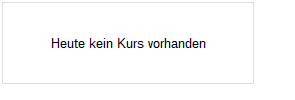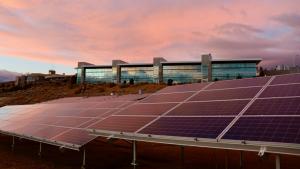
I. M. Skaugen SE : 1H Result 2014
The I.M. Skaugen Group (IMSK) had a negative result for 1H14 of USD 13.4 mill, compared to a positive USD 20.7 mill for 1H13. The 2Q14 result was negative USD 6.8 mill, compared to a negative USD 6.7 mill in 1Q14.
During 2Q14 the EBIT for the Norgas segment improved with USD 2.2 mill from a negative USD 5.1 mill in 1Q14 to a negative of USD 2.9 mill in 2Q14 (negative USD 3.4 mill in 4Q13).
PERFORMANCE IN 1H14
During the first six month we have seen the trading performance for our liquefied gas carriers in Norgas Carriers improving quarter on quarter. As a result the Norgas EBIT improved by USD 2.2 mill from 1Q14 to 2Q14. The EBIT result for the segment was negative USD 2.9 mill in 2Q14 vs negative USD 5.1 mill in 1Q14. We do at present expect to see some further improved trading conditions for our fleet in 2H14 vs 1H14. Improvements come from gradually lowering the number of non-revenue paying days for the fleet due to better scheduling and an improved cargo mix.
Our decision in 4Q13 not to renew a core contract of afreightment (COA) with a client for loading in the Gulf region from January 1st, combined with the prevailing US/EU sanctions against Iran, have reduced the available cargo in the GCC part of the Middle East region for our ships. This required a massive redeployment of our ships to find other better paying markets to avoid being dependent on loading in the Gulf region. By moving ships from "East of Suez" to "West of Suez" and to the Atlantic region in 1H14, we have now developed additional new business during 2Q14 and managed to lower the number of non-revenue paying days for our fleet. We currently can see an underlying improvement of the Norgas segment EBIT (excl. of gain on assets) in its trading operations since a low in 4Q13, which was when we decided to start the repositioning exercise. This is the third quarter where we see a gradual improvement and we expect this trend to continue in 2H14.
Comparing the Group result for 1H14 with 1H13 there are a few underlying factors for the lower result. We now operate a smaller owned/controlled fleet (9 vs 14 vessels) and the average earnings for the fleet are about. 20% lower in 1H14 vs 1H13. We also enjoyed a one-time gain in 1H13 due to restructuring of our composition of the fleet in 1H13. The further improvement achieved in SPT and the positive effects of repurchasing bonds have not been enough to off-set these factors. Even though we have re-purchased USD 17 mill of outstanding bonds we have generated a negative cash-flow from operations and this has caused an increase in net debt. Further savings on IMS Group overhead costs and lower interest cost, were negatively off-set by a one-off foreign exchange loss incurred while awaiting the repatriation of the net proceeds from the sale of Shenghui (RMB weakened vs USD), increased legal cost relating to the disputes with MAN Diesel & Turbo SE (MAN) and the recovery of funds embezzled in China in 2010 in regards to delivery of a ship.
Due to the change in the trade pattern of the commodities we transport, and as a result of being more in the spot market and less reliant on long haul ethylene export from the Gulf region, our portfolio in terms of product type that our vessels transport has changed substantially (see fig. 1).
Ethylene currently only makes up about 20% of total volumes transported vs 50-60% in previous years (see fig. 2). We have thus gone from mainly an ethylene transporter with occasional other products to being more balanced between ethylene, butadiene, propylene, VCM as well as LPG. In the near future we expect to supplement this cargo combination with LNG. With our advanced fleet of state of the art gas carries that can handle change of products transported effectively we can be an attractive transport provider in a market with increasing geographical imbalances.
Ethylene export out of the Gulf region (GCC and Iran) as well as the global ethylene trade remained subdued on a lower volume basis, but we saw a sharp increase in demand measured in "ton/miles" in 2Q14 due to arbitrage trade from Europe to Asia. The current levels of GCC exports stands only at about only 40% of recent historical levels of such exports and by adding to this the, for now, missing Iran exports (that used to be about 40% of global volumes for long haul trade), we note a level change during the last several years from the full Gulf region of about 1.4 million tons per year to 0.45 million tons per year now being exported. Going forward we do not expect the Gulf region's ethylene export to continue to decline in volume, but to recover some during 2H14 and especially when the EU/US sanctions on Iran will be cleared.
Shortage of supply for butadiene in the US drove local prices up and thus stimulated arbitrage trade from both Europe and Asia. Much of the tightness came from planned and un-planned production plant outages in the US. The US should remain structurally short on butadiene due to the increasing use of ethane as feed-stock which yields no butadiene and there should thus remain an underlying need for imports.
As a direct consequence of the shale oil and gas boom in the US there has been a sharp increase in LPG exports of mainly propane. This has now also led to a marked increase in the employment of the short haul and smaller sized fleet of semi refrigerated vessels (in size range from 8-23,000 cbm) for short haul destinations for propane and butane. We gained a number of such LPG fixtures during 2Q14 which allowed our scheduling to improve by combining it with the trade of increased import of butadiene to the US. We expect the growing export of propane out of the US to continue and more so to the many short haul destinations.
Even though the many new orders for vessels, and much larger sized, LPG tonnage coming to the markets towards the end of next year, we expect most of it will be absorbed by the need for exporting LPG in line with the growth in shale gas production. As LPG sellers need to adjust their selling price of the product to develop new markets we see a growing market for smaller parcels fitting the size of ships in our fleet. With the current order book for new vessels of the size 12,000 cbm and smaller being quite low we can see positive signs for this segment of the market going forward.
We also experienced improved trading results from the SPT teams in 2Q14 vs 1Q14 and the company moved its 1H14 results into positive territory due to the 2Q14 performance. This is very encouraging and bodes well for the future as it is from SPT's new business activities outside SPT's former core business which was US Gulf ship to ship transfers of crude oil.
For SPT, the business' portfolio of LNG related terminal services and advisory contracts has continued to build upon its customer base during 2Q14. During this quarter the SPT team secured a number of significant such contracts. Two relate to the provision of marine transfer contingency equipment for existing shore based LNG terminals along with design and engineering packages. The SPT team will also be providing various design and engineering elements, with the possibility for a much greater scope of services to be provided, for a planned shore based regasification facility that will be supplied by a floating storage vessel. Additional longer term contracts related to terminal management and LNG "ship to ship" transfers are actively under discussion.
The SPT group of companies US Gulf based crude oil lightering business, continues to contract as US domestic production continues to grow and imports are reduced. This is reflected in recently announced reports that US crude imports have fallen to approximately 7.3 million barrels per day. The crude oil imports to the US Gulf have declined with about 50% over the last years (see fig. 3).
Since June 2012 we have been working to resolve several outstanding issues with MAN, a German based marine diesel engine supplier. This included refund of prepayments on cancelled engines, warranty questions and compensation for malperformance of engines installed and finally a compensation for their deliberate manipulation of Factory Acceptance Tests (FAT) on engines manufactured by MAN and supplied by them to our companies. The manipulation of the FATs have apparently, and according to MAN representatives, been going on for more than a decade and the MAN entity in question has in 2013 agreed to be given a fine by the German authorities for this unethical and fraudulent conduct. We had reached an overall agreement in August 2013 to resolve all our outstanding issues, but MAN suddenly and unexpectedly decided to contest the validity of the agreements reached and agreed upon after more than a year of negotiations. We are now seeking redress for this. In order to process our civil claims, as described, we have found it to be required to file criminal charges against the MAN company for its fraudulent concealment of the FAT manipulations. In the civil claims we have filed we have found it necessary to put forward well founded claims for losses on our purchases from MAN inclusive of losses regarding extended warranty for performance deficiencies on marine engines already delivered by MAN and compensation for excess fuel consumption of ships to which MAN has delivered engines. This compensation claim is based on MAN admitting to having manipulated FAT tests at their factory in Augsburg and thereby stating lower fuel consumption than what was actually achieved at the tests and higher than the agreed design specifications.
The total global order book for additional semi-refrigerated fleet (all sizes), now stands at 35% measured in cbm capacity of the sailing fleet, with the larger sized vessels (18-23,000 cbm) representing more than 70% of this order book for new ships. This order book of larger vessels reflects mostly the expectation of further growth in longer haul export of LPG and Ethane from the US and is well surpassed by the planned three-fold growth in US LPG exporting capacity. In the smaller vessel segment suitable for regional and short haul trade of petrochemical gases and LPG the growth is marginal at present (see fig. 4). We do expect a sizable part of this new LPG to also move short haul which bodes well for our vessels involved in the growing regional trade of LPG.
CORPORATE ACTIVITIES
We have continued to use excess liquidity to buy back bonds in the market and during 2Q14 we bought bonds with a nominal value of NOK 28.4 mill or about USD 4.8 mill. The book value of our outstanding bond debt has now been reduced with USD 16.8 mill since end of 2013 and was USD 82.4 mill by the end of the second quarter of which about USD 35 mill is due in 2015. Our consolidated mortgage debt by the end of 2Q14 was USD 66.6 mill and our liquidity was USD 21.8 mill.
We remain compliant with all covenants for our loan and bond portfolio and all these are continuously monitored to ensure that pro-active steps are taken.
AGREEMENTS IN AUGUST 2014.
We have in August 2014 agreed with our JV partners in Skaugen Gulf Petchem Carriers Pte Ltd (SGPC) in Bahrain (35% share) that they now will buy their second vessel; the Norgas Petaluma (8,556 cbm, built 2003). The agreed price of USD 24 mill reflects the vessel book value and it will be delivered in September 2014. The three shareholder partners in SGPC will be required to inject additional equity of USD 8 mill (100%) to allow for this purchase. SGPC will now have two ships that both will be financed by shariah compliant loan facilities from Bahraini based banks in the GCC region. The net proceeds, from the sale of Norgas Petaluma, of about USD 20 mill, will be used to reduce corporate debt associated with the vessel and other corporate purposes. The vessel will continue to be operated within the Norgas pool of ships.
As a next step in improving our efficiency further and to lower our operational costs, we have in August transformed our fleet management functions at Norgas Carriers into a newly established joint venture called Skaugen OSM Ship Management Pte Ltd in Singapore and (51% for IMS) in cooperation with the company OSM (www.osm.no). OSM is a global leader in the field of fleet management and by combining our forces we expect material efficiencies to be gained in the management of gas carriers The core of the team of professionals at Skaugen OSM Ship Management Pte Ltd come from the Norgas Carriers and all our seagoing team members will continue. The cost saving will thus not come from day to day operations of the ships, but come mainly from shared services and back up functions where we will benefit from the scale effects of OSM. We will also gain access to a wider range of expertise to handle the many operational challenges a company like our has to struggle with. OSM will gain access to the Norgas know how re gas tankers and this could allow the joint venture company to expand its business. The expected cost savings we are seeking are material and achievable and will gradually be realized and with full effect from late 2014.
FIVE YEARS OF TRANSFORMATION - 2009 to 2014.
The "2008 financial crisis" and the subsequent "Great Recession" made us re-think and re-focus our business towards what it is starting to look like today. We have gone from having global ambitions for three different business segments to having one core business segment focused on the markets for the handling and transportation of liquefied gases.
We have transformed from mainly being a long haul ethylene transporter with a focus on the Gulf region and "East of Suez" to a regional transporter of liquefied gases. We currently carry a balanced portfolio of all petrochemical gases, LPG and LNG and we operate both East and West of Suez. Our modern fleet of gas carriers with more flexibility and superior capabilities for cooling and changing between products transported has become an effective tool to capture opportunities from arbitrage trade. It has also helped improve efficiency by increasing the cargo carrying time for our vessels. The transformation is by no means finished, but we are getting where we want to be.
When the "2008 financial crisis" hit we were in the middle of a fleet expansion by newbuild of ships in China. The newbuildings were delayed during construction and the process of making their delivery was more complicated than anticipated and much delayed. We managed to acquire all the ships combined at competitive cost, but not as competitive as expected. The expected lower cost we planned for were to compensate for the risks we took in the process. Due to the financial crisis as well as the delays the financing became more expensive and more complicated.
The challenge to secure debt financing was not the only challenge companies like ours were confronted with after the 2008 crisis. We took the necessary actions to secure long term finance solutions, but we and much of the rest of the industry also faced an "output gap". The widening gap created by the increased supply capacity in the value chain, not only in the marine transportation segment, was based on pre-crisis analysis of future growth in demand. In many regions and in many industries and certainly within ours, this "output gap" is yet to be closed.
During our journey on this sea of change, the headwinds have sometimes been strong. The Iran sanctions by EU/US have made it more challenging, but the decline from GCC region itself has also been material and the trade now stands at less than half of what it used to be. The long-haul trade of petrochemicals, and especially that of ethylene out of the Gulf region that was our core business area, has thus been greatly reduced and has also to a great extent been substituted by more of a short-haul trade This has led to a reduction in the ton-miles demand for the core petrochemical gas products we carry and chief amongst these are ethylene. Most analysis and plans were for this trade to expand.
Another major change has been the stark decline in the import of crude oil to the US due to increased domestic oil production. This deteriorated the fundamental basis for the core business of SPT- the crude oil lightering business in the US Gulf based on long haul imports of crude oil. This market has been reduced to about 50% of its former size.
We have also encountered challenges by LNG not being available in the quantities expected. The shortage of LNG has made LNG costly and delayed the expected conversion from diesel for power generation and transportation that would allow our ships to serve these markets. We see LNG production expanding again in the years ahead and the price for LNG has become more affordable. This should make LNG more available for the redistribution purposes we are cultivating.
New opportunities have however emerged on the horizon during this journey and a prime example are the positive effects of the shale oil- and gas boom in the US, with growth in both export and import of most liquefied gases.
After having completed our fleet renewal program in 2010/11, we have successively divested all of our ship building activities in China as well as exited all other non-core business activities in China. The composition of our assets has thus changed as well. During this five year period we have gone from managing a diverse fleet of 41 vessels in all our segments to a fleet of 15 that is now aligned with our liquefied gas strategy. We have sold 7 of our older and less efficient gas carriers, net proceeds from such sales are USD 34.5 mill and all with a gain compared to book value. Other non-core assets have realized USD 52.6 mill in net proceeds. We have continued to use excess liquidity to reduce our debts and to improve our balance sheet capacity. We have during this period reduced our bond debt with USD 107 mill (see fig 5).
Our shore based teams and organization has step by step been both centralized and simplified during this period and aligned with the reduction of business areas. The management of our core business is now based at our hub in Singapore with a small corporate office in Oslo to cover the functions needed. Our shore based staff has been reduced with more than 100 people or 60% and as a result of the strategic and operational changes made.
FIVE YEARS FROM NOW?
We have continued our strategy to target and develop niche markets where we see potential for growth and higher margins and where we can use technology and innovation to position us as the cost and service leader. The small scale LNG markets is one such niche market where we believe we can leverage our fleet of innovative LNG carriers with our knowledge of safely transferring liquefied gases as well as LNG terminal management.
Another growing market is the short haul market for handling and transportation of liquefied gases such as LPG and the wider range of petrochemical gases. These gases are petrochemical gases like ethylene, butadiene, propylene and VCM, all key intermediate products in the value chain for plastics and rubber products. LPG (liquefied petroleum gas, i.e. propane and butane) is an easily distributed fuel product but also a key feed-stock for the petrochemical industry. LPG is a by-product from oil- and gas processing and its markets are supply driven. LNG is natural gas that has been cooled down to its liquid form in order to transport it efficiently. At the point of use it will be heated up and turned into natural gas again and used mostly for power generation.
One thing that has not changed throughout this transformation is our firm belief that small scale LNG will become a key market for us. It has taken longer to achieve, but we do believe we will get there. During this period we have made substantial investments to develop our small scale LNG concept. The cargo system we developed for the MultiGas vessels is unique and contains many novel technologies. It can handle a wide range of gases including LNG and keep them cool during transport without any losses. We have also invested close to USD 15 mill in R&D as well as market- and concept developments. The latter includes equipment and systems for transferring (ship-to-ship), storing and re-gassing of LNG. The return on these investments has been slower than anticipated but we now see regional markets where tangible projects are under development.
In many countries state fiscal reasons do also require that fuel subsidies now need to be removed. This will ensure that gas is cheaper than diesel fuel and the economics for gas distributed as LNG will be there for two key market segments. Firstly, remote power plants where more expensive diesel is the alternative fuel due to lack of gas supply through pipelines. Secondly, the transportation market as fuel for trucks, buses and cars as well as ships. Diesel and petrol are far too valuable products while abundant and lower cost gas should become the transport fuel of the future. Due to its composition, natural gas is the fossil fuel with the lowest emissions. Compared to conventional fuels it will generate no SOx emissions, reduce NOx emissions with 80-90% and reduce CO2 emissions with 20-30%. For both these market segments, one of the key enablers will be the availability of small scale LNG supply chains where the gas is delivered in its liquid form and in smaller quantities to multiple locations. Our fleet of six LNG capable vessels could easily be deployed in LNG service as and when needed.
The SPT group of companies has been transformed from its total dependency on US oil imports with heavy commitments on leased crude tankers and into an "asset light" global service business for "ship to ship transfer" of liquefied gases, crude oil and petroleum products. The SPT teams has also during this period managed to develop a portfolio of LNG related clients - both for managing ship-to-ship transfer of LNG but also to provide LNG terminal management and advice for LNG terminal design. For many new entrants to the LNG trade there is a demand for the SPT experience and know-how for design and operations of LNG receiving terminals, Floating Storage Units with or without regasification as well as growing ship to ship transfers of LNG.
Responsibility statement
We confirm, to the best of our knowledge, that the condensed set of financial statements for the period 1st January to 30th June 2014 has been prepared in accordance with IAS 34 - Interim Financial Reporting, and gives a true and fair view of the Group's assets, liabilities, financial position and profit or loss as a whole.
We also confirm, to the best of our knowledge, that the interim report includes a fair review of important events that have occurred during the first six months or the financial year and their impact on the condensed set of financial statements, a description of principal risks and uncertainties for the remaining six months of the financial year, and majority related parties transactions
Oslo, 20th August 2014
I.M. Skaugen SE
Board of Directors
I.M. Skaugen SE
If you have any questions, please contact:
Bente Flø, Chief Financial Officer, on telephone +47 23 12 03 30 /+47 91 64 56 08
or by e-mail: bente.flo@skaugen.com.
This press release is also available on the Internet at our website: www.skaugen.com.
I.M. Skaugen SE is a Marine Transportation Service Company, with a focus on Innovative Maritime Solutions. Our core business activity is to provide logistics solutions for seaborne regional distribution of liquefied gasses such as LNG and petrochemical gases as well as LPG.
The Skaugen Group of companies currently operates a fleet of 22 vessels worldwide. In our core fleet of 15 advanced gas carriers, we have 6 vessels with the capacity to transport LNG in addition to petrochemical gases. Our global teams can provide on- and off-shore LNG terminal management as well as ship to ship transfer services of LNG/LPG. We have in-house capabilities for the development and design of specialized high quality LNG- and gas carriers for our niche markets. We recruit, train and employ our own team of seafarers.
IMS employs approximately 700 people globally and with nearly 30 nationalities represented. We manage and operate our activities and service our clients from our offices in Singapore, Oslo, Houston and Sunderland.
The issuer of this announcement warrants that they are solely responsible for the content, accuracy and originality of the information contained therein.
Source: I. M. Skaugen SE via Globenewswire
Mehr Nachrichten zur I.M. Skaugen Aktie kostenlos abonnieren
(Mit der Bestellung akzeptierst du die Datenschutzhinweise)

Hinweis: ARIVA.DE veröffentlicht in dieser Rubrik Analysen, Kolumnen und Nachrichten aus verschiedenen Quellen. Die ARIVA.DE AG ist nicht verantwortlich für Inhalte, die erkennbar von Dritten in den „News“-Bereich dieser Webseite eingestellt worden sind, und macht sich diese nicht zu Eigen. Diese Inhalte sind insbesondere durch eine entsprechende „von“-Kennzeichnung unterhalb der Artikelüberschrift und/oder durch den Link „Um den vollständigen Artikel zu lesen, klicken Sie bitte hier.“ erkennbar; verantwortlich für diese Inhalte ist allein der genannte Dritte.




